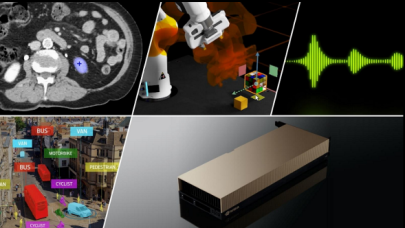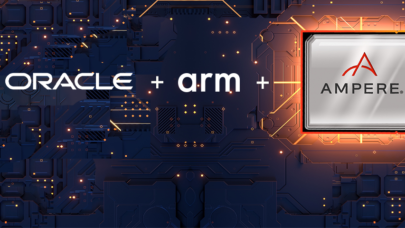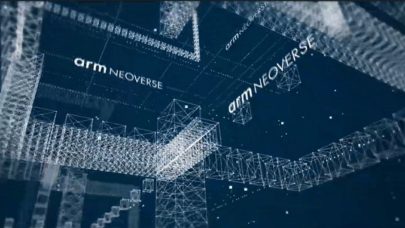
US DOD Ends Cloud Drama with $9 Billion Contract to Top Cloud Providers
December 8, 2022
The U.S. Department of Defense wielded its JEDI powers to procure public cloud services with a diplomatic end to a feud between Amazon and Google to win the multi-billion dollar contract. The DoD broke up a $9 billion contract between the top four cloud providers – Google, Amazon, Microsoft and Oracle – for the Joint Warfighting Cloud Capability initiative, which will bring the defense branches – Air Force, Army... Read more…

Oracle Providing a Ground to Fuel Nvidia’s Subscription Revenue
October 18, 2022
Oracle is bringing Nvidia's AI Enterprise software suite alongside thousands of its latest GPUs to its cloud infrastructure, which could fuel the chipmaker’s Read more…

SC21’s Student Cluster Competition Winners Announced
November 19, 2021
SC21 may have been the first major supercomputing conference to return to in-person activities, but not everything returned to the live menu: the Student Cluster Competition – held virtually at ISC 2020, SC20 and ISC 2021 – was again held virtually at SC21. Nevertheless, Students@SC Chair Jay Lofstead took the physical stage at SC21 on Thursday to announce the... Read more…

Using HPC Cloud, Researchers Investigate the COVID-19 Lab Leak Hypothesis
May 27, 2021
At the end of 2019, strange pneumonia cases started cropping up in Wuhan, China. As Wuhan (then China, then the world) scrambled to contain what would, of cours Read more…

OCI Jumps into Arm with Instances and Aggressive Developer Program
May 25, 2021
Oracle Cloud Infrastructure (OCI) today launched a multi-prong Arm initiative including instances (VM and bare metal) based on Ampere’s Altra microprocessor, Read more…

Arm Details Neoverse V1, N2 Platforms with New Mesh Interconnect, Advances Partner Ecosystem
April 27, 2021
Chip designer Arm Holdings is sharing details about its Neoverse V1 and N2 cores, introducing its new CMN-700 interconnect, and showcasing its partners' plans t Read more…

Intel Launches 10nm ‘Ice Lake’ Datacenter CPU with Up to 40 Cores
April 6, 2021
The wait is over. Today Intel officially launched its 10nm datacenter CPU, the third-generation Intel Xeon Scalable processor, codenamed Ice Lake. With up to 40 Read more…

Safety Pharmacology: How HPC Cloud Is Accelerating Drug Cardiotoxicity Screening
March 30, 2021
The extraordinarily rapid drug development necessitated by the COVID-19 pandemic may have pulled AI- and HPC-accelerated pharmacology into the spotlight, but si Read more…

- Click Here for More Headlines

Whitepaper
Transforming Industrial and Automotive Manufacturing
In this era, expansion in digital infrastructure capacity is inevitable. Parallel to this, climate change consciousness is also rising, making sustainability a mandatory part of the organization’s functioning. As computing workloads such as AI and HPC continue to surge, so does the energy consumption, posing environmental woes. IT departments within organizations have a crucial role in combating this challenge. They can significantly drive sustainable practices by influencing newer technologies and process adoption that aid in mitigating the effects of climate change.
While buying more sustainable IT solutions is an option, partnering with IT solutions providers, such and Lenovo and Intel, who are committed to sustainability and aiding customers in executing sustainability strategies is likely to be more impactful.
Learn how Lenovo and Intel, through their partnership, are strongly positioned to address this need with their innovations driving energy efficiency and environmental stewardship.
Download Now
Sponsored by Lenovo
Whitepaper
How Direct Liquid Cooling Improves Data Center Energy Efficiency
Data centers are experiencing increasing power consumption, space constraints and cooling demands due to the unprecedented computing power required by today’s chips and servers. HVAC cooling systems consume approximately 40% of a data center’s electricity. These systems traditionally use air conditioning, air handling and fans to cool the data center facility and IT equipment, ultimately resulting in high energy consumption and high carbon emissions. Data centers are moving to direct liquid cooled (DLC) systems to improve cooling efficiency thus lowering their PUE, operating expenses (OPEX) and carbon footprint.
This paper describes how CoolIT Systems (CoolIT) meets the need for improved energy efficiency in data centers and includes case studies that show how CoolIT’s DLC solutions improve energy efficiency, increase rack density, lower OPEX, and enable sustainability programs. CoolIT is the global market and innovation leader in scalable DLC solutions for the world’s most demanding computing environments. CoolIT’s end-to-end solutions meet the rising demand in cooling and the rising demand for energy efficiency.
Download Now
Sponsored by CoolIT
Advanced Scale Career Development & Workforce Enhancement Center
Featured Advanced Scale Jobs:
HPCwire Resource Library
HPCwire Product Showcase
© 2024 HPCwire. All Rights Reserved. A Tabor Communications Publication
HPCwire is a registered trademark of Tabor Communications, Inc. Use of this site is governed by our Terms of Use and Privacy Policy.
Reproduction in whole or in part in any form or medium without express written permission of Tabor Communications, Inc. is prohibited.
























